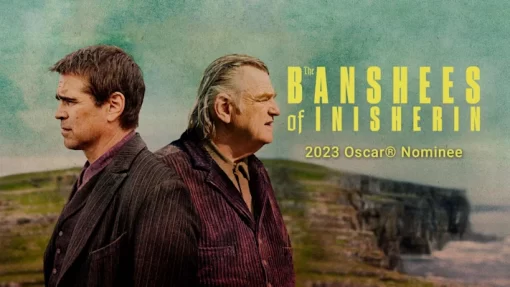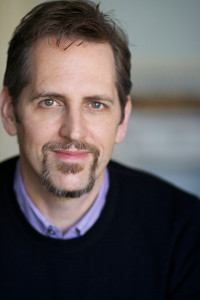The second act of a screenplay is that long middle section where the story’s main character actively struggles to resolve whatever the primary story problem is.
Whether it’s a life and death battle, a mystery, or trying to fix and secure a key relationship, the stakes are high, the threat is real, and they take action, with “agency,” towards whatever it is they want. And the more difficult and unlikely the goal, the better.
Ideally the audience is emotionally invested in that, and entertained by watching it.
Sounds simple, right?
It is, but there are so many things that can go wrong, and it’s not easy to do this really well.
In my own scripts and working with writers in my online Idea Course and private consultations, I’ve come up with three main pieces of guidance for a strong second act…
1. Focus on the main character and what they’re doing
I think what makes us engage with a story usually comes down to a particular character we strongly identify with, who we enjoy watching as they try to problem-solve. That’s at the heart of virtually every good story and scene.
Some movies (and most episodes of TV) have more than one story going on at any given time, each with its own main character trying to solve their own problem. If that describes your script, then the tips I’m sharing here would apply to EACH of those separate stories.
But let’s assume you’re writing a movie with the traditional single main character, with one main problem. Like The Banshees of Inisherin, which is about a man whose best friend decides he wants nothing to do with him any more. A problem the main character wants to solve.
What we want to avoid (and it does) are a lot of scenes about other characters doing other things that aren’t about this one main problem and the main character’s emotionally charged attempts to fix it.
Unless we’re writing an ensemble piece where we move around to different stories, we usually want to stay with whoever we’ve established as the main character.
And we want to make the scenes mostly about what they’re trying to do to solve the problem. Those attempts generally don’t work, involve high conflict, and only lead to complications, which means more stuff they they then have to deal with.
2. It’s about a process, where things mostly don’t work
Save the Cat talks about the main character entering an “upside down world” in Act Two – an “antithesis” to their normal life where they will embark on a specific plan to try to resolve their situation. And there’s something or someone powerful in the way of that plan.
Those underlined words are really the concept of your movie, and what you want to make the clear focus of its pitch. So often when I read loglines, they spend a lot of time on the first act, and the catalyst that sets the story in motion, and very little on what happens after that.
But what happens after that is 75% or more of the story. (All of Acts 2-3.) We don’t just want to know what their problem and goal is — we want to know what they’ll be doing to try to solve it, what’s in the way, and a sense of why it will be so hard to achieve.
These are the most important questions about your second act, and your story as a whole. The answers to these dictate your genre and your story’s central concept or premise.
And as your second act gets under way, the “promise of that premise” (another Save the Cat concept) begins to reveal itself — which means the fun-to-watch conflicts of the main character’s first stumbling attempts to try to resolve the problem. which typically don’t go well.
In Banshees, the main character is trying to get answers about why his friend has dumped him — he tries to find allies, to talk the friend out of it, to forge a path forward.
None of which work. At all.
And that’s the key thing about the middle of the story. It’s not usually about gradual advancement toward a positive outcome. It’s about the difficulty and unlikeliness of that outcome ever happening — how it continues to elude — despite all that the main character does to try to get there.
Somehow their active efforts have to be met with counterpunches of some kind that only make things worse. Banshees definitely has this, in a big way. But I won’t spoil it by telling you what these are. Suffice it to say that it has the classic “stakes raising” at the midpoint, leading to a second half of act two where things only get worse and worse from there, culminating in an “all is lost” moment at the end of act two. All around that one simple (but important) story problem.
Not only is it not getting solved; it gets more dire than ever, with resolution growingly unlikely.
Without getting into commentary on Banshees’ first and third acts, which handle things unconventionally in some ways, with very little Set-up, an early Catalyst, and an unusual approach to the “finale,” the movie is a classic exploration of a second act, with its focus on one character trying to solve one thing that matters to them, that develops and builds.
3. It’s about external stakes and action, not just internal growth
We writers tend to get obsessed with character arcs and theme, and for good reason. It’s often what’s most important and meaningful to us, and perhaps the audience.
But the heart of a strong story is not just someone who needs to learn a lesson or grow. And in the second act, they’re usually not focused on that. Whatever their inner flaws are, the events of the second act (and any B Stories) may be poking them and causing them to look at these issues, but they usually make zero progress in really changing and might totally resist it. Any real breakthrough is saved for the ending, just like the resolution to the external plot.
I notice many writers are so focused on their main characters dealing with internal problems (whether they’re improving in act two, or not) but without a compelling enough challenge in their external life circumstances to focus the story on.
This is one of the most common issues with scripts that don’t seem to be active or entertaining enough, or have high enough stakes.
Certainly internal growth matters, and most great scripts weave that in. But for the second act of a screenplay to work best — which really means the concept and script as a whole — I recommend the main character be grappling in the world of outer life situations, to achieve something that matters to them there.
Again, whether it’s about life and death at one extreme or something in the realm of personal relationships at the other, we want to see people we care about try to make their life situations better, and resolve whatever threatens to make them worse.
If your story premise and second act focus on that — on a PROBLEM in their outer world that must be solved — and they won’t stop until it is, by pursuing a particular plan of action that meets with tons of conflict and complications that only build the problem — you’ll be on the right track.



Yep, second acts are what make or break a story – and where the experience and skill of a writer shine. It’s that crucial section between the spectacular introductory launching of a character and his dilemma and the even more spectacular conclusion.
Progressing forward with increased stakes. Ups and down while juggling supporting characters and plots.
No small deed.